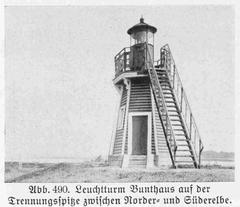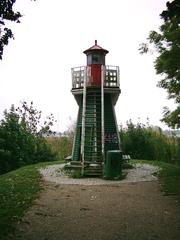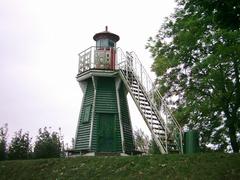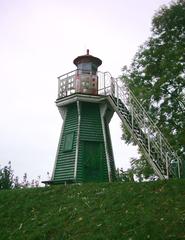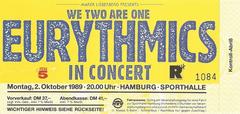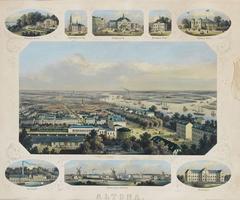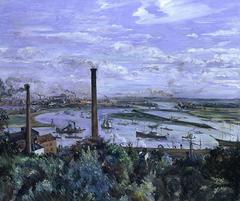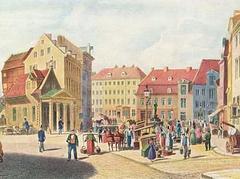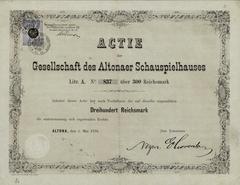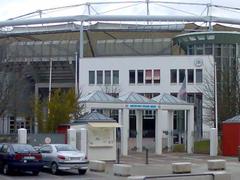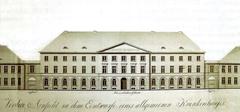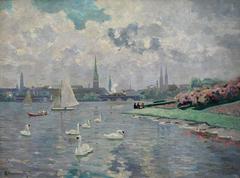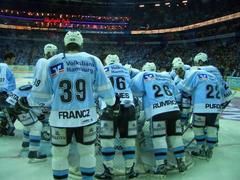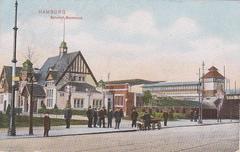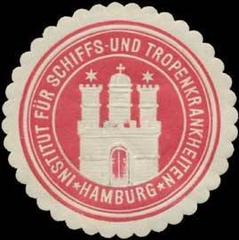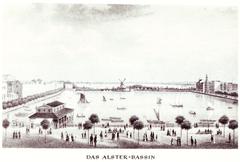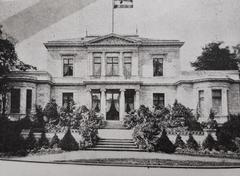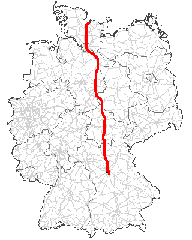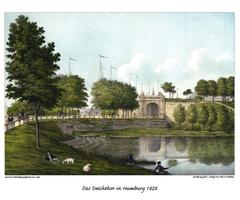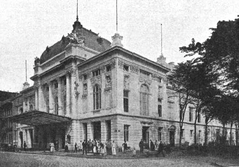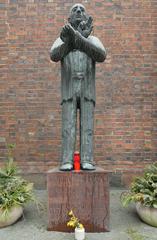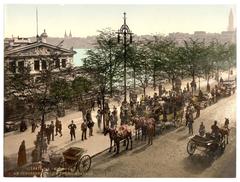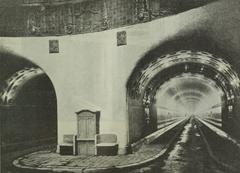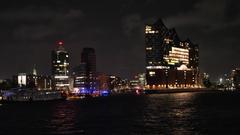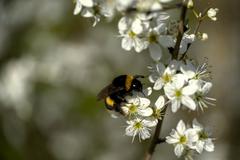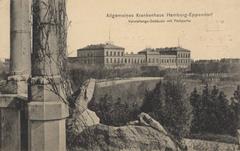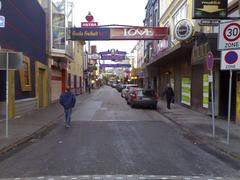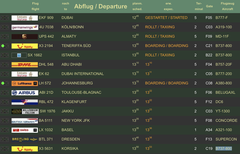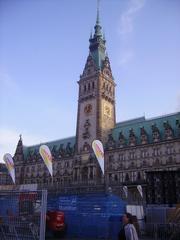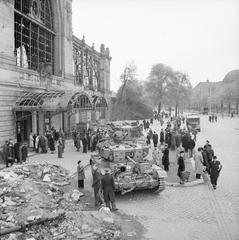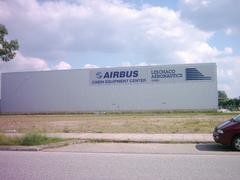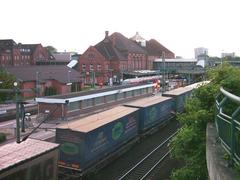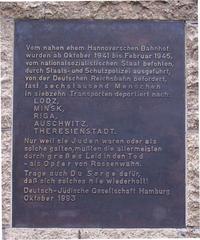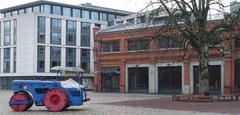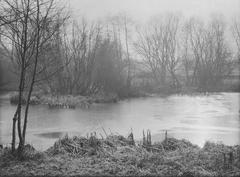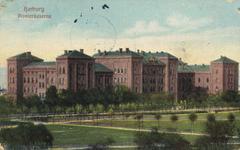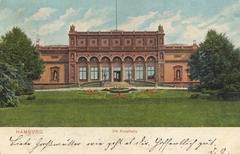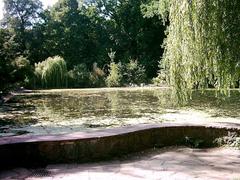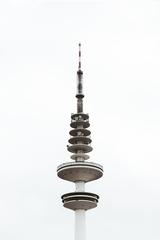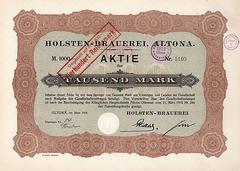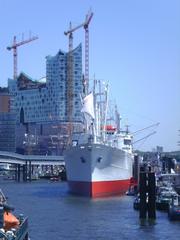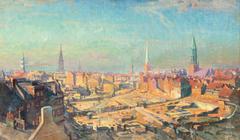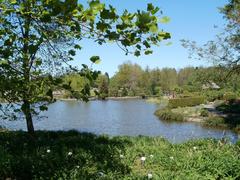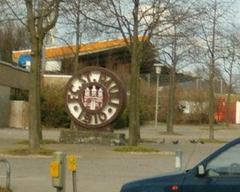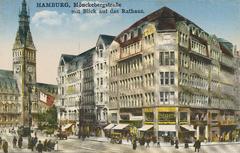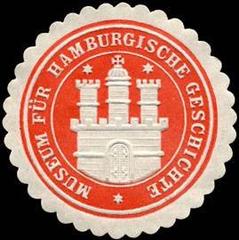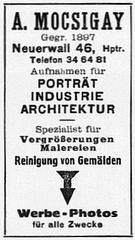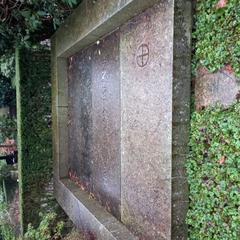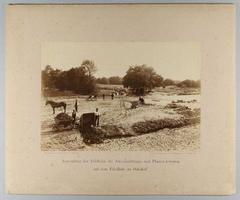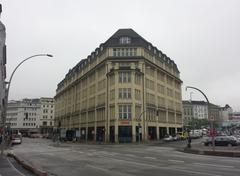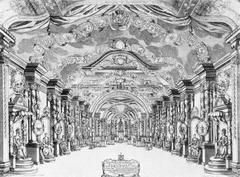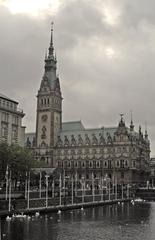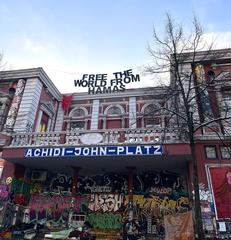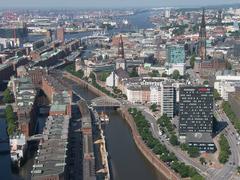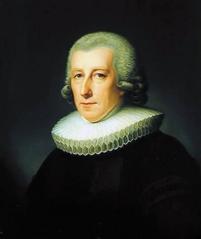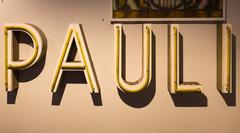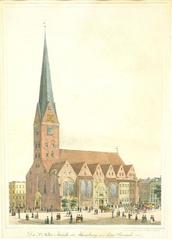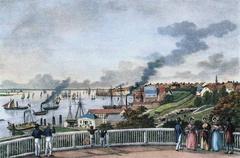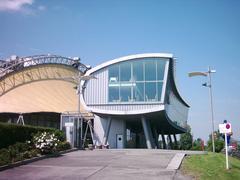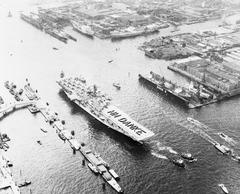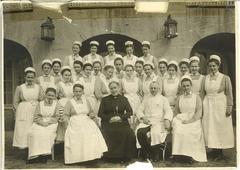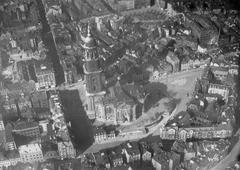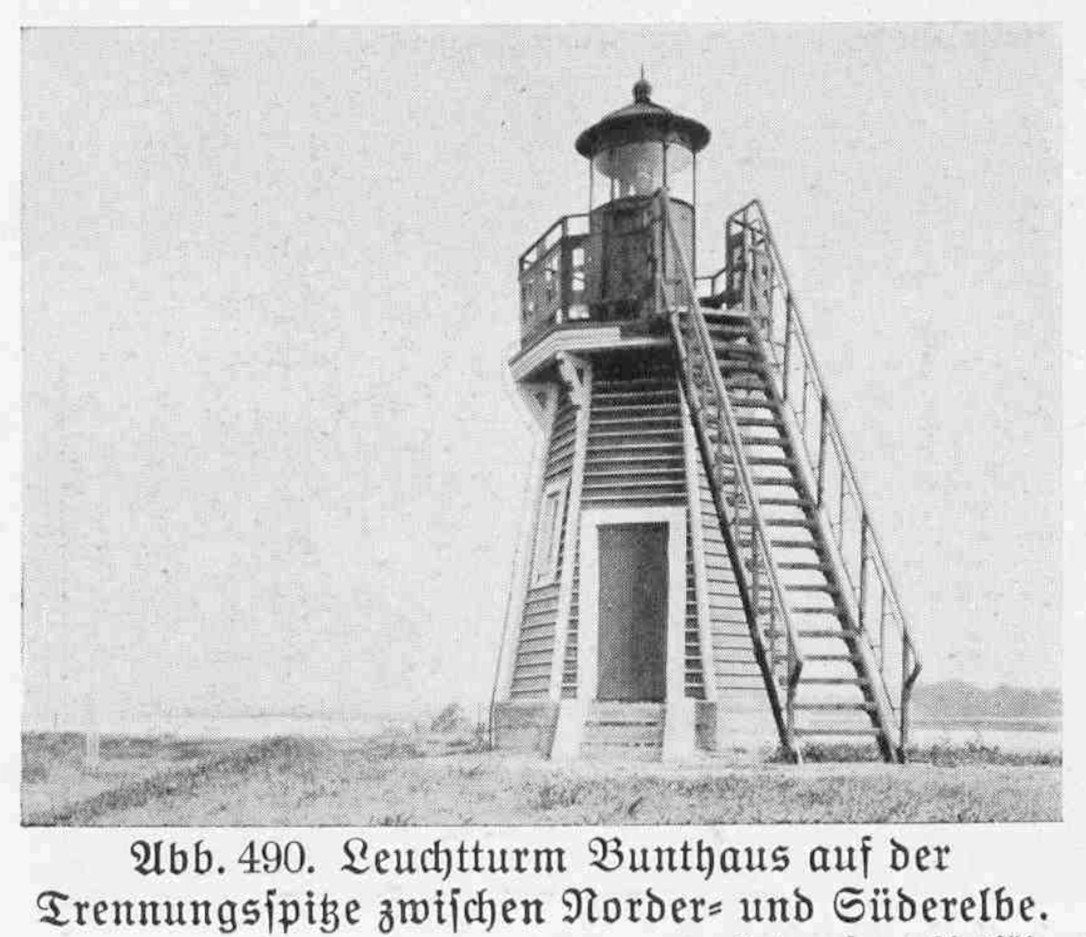
Visiting Leuchtfeuer Bunthaus: Hours, Tickets, and Nearby Attractions
Date: 31/07/2024
Introduction
Leuchtfeuer Bunthaus, commonly known as the Bunthaus Lighthouse, is a historically significant landmark located at the Bunthäuser Spitze in Hamburg, Germany. This lighthouse, constructed in 1913 and operational by 1914, sits at the pivotal juncture where the Elbe River splits into the Norderelbe and Süderelbe, forming an inland delta (Hamburg Travel). The lighthouse served as an essential navigation aid for ships traversing this intricate segment of the river, marking it as a critical component of Hamburg’s maritime heritage.
With its unique architectural features, including a hexagonal wooden tower and a distinctive red, riveted steel lantern house, Leuchtfeuer Bunthaus stands as a testament to early 20th-century lighthouse design (Wikipedia). Although its light was extinguished in 1977, the lighthouse has been preserved as a historical monument, symbolizing Hamburg’s long-standing relationship with its waterways and its significance as a major port city (Hamburg Tourism).
Today, Leuchtfeuer Bunthaus is not only a reminder of Hamburg’s rich maritime past but also a beloved destination for visitors. The lighthouse offers a blend of historical intrigue, scenic beauty, and recreational activities, making it a must-visit site for tourists and locals alike. This comprehensive guide aims to provide all the necessary information for planning a memorable visit, from historical insights and architectural details to practical tips and nearby attractions.
Table of Contents
- [History and Significance](#history-and-significancehistory-and-significance)
- [Construction and Early Years](#construction-and-early-yearsconstruction-and-early-years)
- [Architectural Features](#architectural-featuresarchitectural-features)
- [Operational Period](#operational-periodoperational-period)
- [Preservation and Restoration](#preservation-and-restorationpreservation-and-restoration)
- [Cultural and Historical Significance](#cultural-and-historical-significancecultural-and-historical-significance)
- [Visitor Information](#visitor-informationvisitor-information)
- [Visiting Hours](#visiting-hoursvisiting-hours)
- [Ticket Prices](#ticket-pricesticket-prices)
- [Guided Tours](#guided-toursguided-tours)
- [Special Events](#special-eventsspecial-events)
- [Modern-Day Relevance](#modern-day-relevancemodern-day-relevance)
- [Recreational Activities](#recreational-activitiesrecreational-activities)
- [Accessibility](#accessibilityaccessibility)
- [Photographic Spots](#photographic-spotsphotographic-spots)
- [FAQ](#faqfaq)
- [Conclusion](#conclusionconclusion)
- [References](#referencesreferences)
History and Significance
Construction and Early Years
Leuchtfeuer Bunthaus, also known as the Bunthaus Lighthouse, was constructed in 1913 and became operational in 1914. Located at Elbe kilometer 609, this lighthouse was strategically positioned at the Bunthäuser Spitze, where the Elbe River splits into the Norderelbe and Süderelbe, forming an inland delta. The primary function of the lighthouse was to serve as an orientation beacon for ships navigating this critical juncture of the river (Hamburg Travel).
Architectural Features
The lighthouse is a green, hexagonal wooden tower with white corner protection strips, standing at approximately seven meters high. It features a red, riveted steel lantern house that housed a belt lens with two 60-watt, 220-volt incandescent lamps, capable of emitting light visible from 360 degrees. An iron, nineteen-step white exterior staircase leads to an observation platform with a white railing, offering panoramic views of the surrounding landscape (Wikipedia).
Operational Period
From its inception in 1914 until 1977, Leuchtfeuer Bunthaus played a crucial role in maritime navigation. It marked the division of the Elbe’s navigable waters, guiding ships safely through the Norderelbe and Süderelbe channels. The lighthouse’s light was extinguished in March 1977, and its navigational duties were taken over by a series of buoys—two red, two green, and one red-green buoy (Wikipedia).
Preservation and Restoration
The lighthouse was placed under a preservation order in 2005, recognizing its historical and architectural significance. A dedicated registered association now oversees its maintenance and preservation. The structure underwent significant renovations in 1989 to commemorate the 800th anniversary of the Port of Hamburg, ensuring its continued existence as a historical landmark (Hamburg Tourism).
Cultural and Historical Significance
Leuchtfeuer Bunthaus is not just a navigational aid but also a symbol of Hamburg’s rich maritime heritage. Its location at the Bunthäuser Spitze, where the Elbe River splits, has made it a point of interest for both locals and tourists. The lighthouse stands as a testament to the city’s historical reliance on river navigation and its ongoing efforts to preserve its maritime landmarks (Creme Guides).
Visitor Information
Visiting Hours
Leuchtfeuer Bunthaus is open to visitors year-round, with peak visiting hours during the spring and summer months. However, it is advisable to check specific opening hours on the official Hamburg tourism website or local information centers.
Ticket Prices
Entrance to the lighthouse is free of charge, though donations towards its preservation are welcomed and encouraged.
Guided Tours
Guided tours are available upon request, offering in-depth insights into the history and significance of the lighthouse. These tours are an excellent opportunity for visitors to learn more about the maritime history of Hamburg.
Special Events
Throughout the year, the lighthouse hosts several special events, including photography workshops, historical lectures, and seasonal festivals. These events provide unique opportunities for visitors to engage with the site in different ways.
Modern-Day Relevance
Today, Leuchtfeuer Bunthaus is a popular destination for visitors seeking to explore Hamburg’s natural and historical sites. The lighthouse is accessible via the Bunthäuser hiking trail, which offers a scenic route through the area’s diverse landscapes, including horse pastures, vegetable gardens, and traditional farmhouses. The trail culminates at the lighthouse, where visitors can enjoy stunning views of the Elbe delta and the surrounding nature reserves (Hamburg Tourist Info).
Recreational Activities
The area around Leuchtfeuer Bunthaus is rich in recreational opportunities. The lighthouse’s location within the Heuckenlock nature reserve makes it an ideal spot for bird watching, hiking, and cycling. The nearby Süderelbe and Norderelbe rivers offer various water sports activities, including kayaking and sailing. Additionally, the region is home to several golf courses and equestrian facilities, catering to a wide range of outdoor enthusiasts (Komoot).
Accessibility
Reaching Leuchtfeuer Bunthaus is relatively straightforward. Visitors can drive via the A1 motorway, exiting at Stillhorn and following the Stillhorner Hauptdeich to the Bunthäuser Spitze. Alternatively, public transportation options include taking bus 351 from the Wilhelmsburg S-Bahn station to the Freiluftschule Moorwerder, followed by a short walk to the lighthouse. For those preferring a more scenic route, cycling from the Hamburg Landungsbrücken via ferry 73 to the Ernst-August-Schleuse and then along the Moorwerder Hauptdeich is a popular choice (Hamburg Tourist Info).
Photographic Spots
The lighthouse and its surroundings offer numerous picturesque spots perfect for photography enthusiasts. The observation platform provides panoramic views that are particularly stunning during sunrise and sunset.
FAQ
What are the visiting hours for Leuchtfeuer Bunthaus?
The lighthouse is open year-round, with peak visiting hours during the spring and summer months. Check the official Hamburg tourism website for specific times.
How much are the tickets for Leuchtfeuer Bunthaus?
Entrance is free, though donations are encouraged.
Are guided tours available?
Yes, guided tours can be arranged upon request.
Conclusion
Leuchtfeuer Bunthaus stands as a significant historical and cultural landmark in Hamburg. Its rich history, unique architectural features, and the role it played in maritime navigation make it a must-visit site for anyone interested in exploring the city’s maritime heritage. The lighthouse’s preservation and the recreational opportunities it offers ensure that it remains a cherished destination for both locals and tourists alike. Download the Audiala app for more travel tips and follow us on social media for updates on special events and guided tours.
References
- Hamburg Travel. (n.d.). Leuchtfeuer Bunthaus. Retrieved from https://www.hamburg-travel.com/see-explore/sightseeing/leuchtfeuer-bunthaus/
- Wikipedia. (n.d.). Leuchtfeuer Bunthaus. Retrieved from https://de.wikipedia.org/wiki/Leuchtfeuer_Bunthaus
- Hamburg Tourism. (n.d.). Leuchtfeuer Bunthaus. Retrieved from https://www.hamburg-tourism.de/sehen-erleben/sehenswuerdigkeiten/leuchtfeuer-bunthaus/
- Creme Guides. (n.d.). Leuchtfeuer Bunthaus. Retrieved from https://www.cremeguides.com/hamburg/leuchtfeuer-bunthaus/
- Hamburg Tourist Info. (n.d.). Bunthäuser Spitze. Retrieved from https://hamburgtourist.info/sehenswuerdigkeiten-hamburg/sehenswurdigkeiten-im-hamburger-suden/bunthaus-spitze.html
- Komoot. (n.d.). Bunthaus Spitze. Retrieved from https://www.komoot.com/highlight/111752
